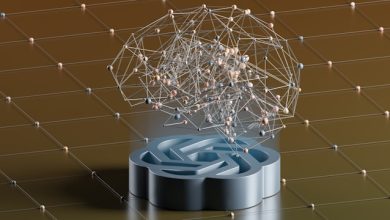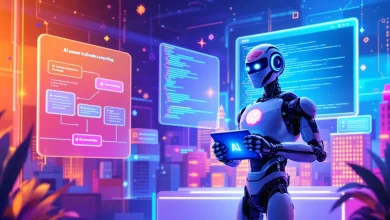
Oil & Gas, Life Sciences, Restaurants & Food Service. Different industries, same challenge: work smarter with fewer resources. AI is proving useful where it matters most: better decisions, faster action, and stronger outcomes.
From reducing equipment failure in oilfields to improving patient outcomes and cutting food waste, AI is helping companies run faster, leaner, and smarter.
AI in Oil & Gas: Predictive Maintenance and Pressure Calculations
Oil and gas companies are under constant pressure. Equipment failure. Fluctuating prices. Risky drilling operations. AI helps solve some of those problems by making operations more predictable and more efficient.
Here’s how companies are applying AI in practical ways:
Predict equipment failures before they happen
Downtime costs money—especially when rigs or pipelines are involved. AI helps spot problems before they cause a breakdown. By analyzing sensor data, AI systems can flag abnormal behavior early.
For example, Shell cut unplanned downtime by 20% using AI to monitor and predict failures in compressors and turbines. Less downtime. More production. Lower costs.
Smarter Supply Chains
AI helps manage inventory, transport, and demand forecasting across oilfield equipment and materials. This leads to faster deliveries and lower costs.
Smartbridge has worked with clients to improve back-office efficiency using AI for invoice processing and asset tracking—two areas where manual processes are slow and error-prone.
Speed up pressure calculations
In one case, an energy company automated Bottom Hole Flowing Pressure (BHFP) calculations. The company sought to modernize and automate its BHFP calculations that were previously managed through on-premises Python scripts and databases. They wanted to move to a reliable, scalable, cloud-based data foundation on Microsoft Azure.
To address this case, they achieved end-to-end process transformation, reducing manual oversight, increasing reliability, and accelerating insights for critical operational decisions for both new and existing wells.
The result?
- Faster access to critical data
- Higher reliability
- Fewer delays in decision-making
This isn’t about replacing engineers or field workers. It’s about helping them make smarter decisions, faster.
AI in Life Sciences: Demand Forecasting and Real-Time Monitoring
In life sciences, time and accuracy are everything. AI is helping companies reduce risks, save time, and make better use of their data.
Here’s where AI is making an impact:
Predict demand more accurately
One global medical device company implemented forecasting using Azure Machine Learning. This let them fix devices before patients were affected and cut maintenance downtime. This improved planning accuracy and reduced excess inventory.
Without Azure machine learning, the anomaly detection process could take nearly an entire workday. With an automation pipeline in Azure ML, it would take less than an hour.
Accelerate drug discovery
AI scans massive datasets to identify promising compounds. Pfizer and others are using this to cut research timelines. Less trial and error. More targeted development.
Monitor patients with real-time data
Wearables and connected devices feed AI models that flag issues early. AI doesn’t sleep. It monitors patient data in real time, from pacemakers to glucose sensors, and alerts care teams if something’s wrong. This kind of real-time data saves lives and cuts ER visits.
These use cases aren’t just operational improvements, they directly support better care and stronger product development.
AI in Restaurants & Food Service: Customer Insights and Food Waste Reduction
In food, margins are thin and customer loyalty is everything. AI helps operators move faster, reduce waste, and improve the guest experience.
Here’s how restaurants and food service groups are using AI today:
Understand customer feedback at scale
If you manage multiple restaurant brands, collecting and analyzing customer feedback manually is a nightmare. One of the largest fine dining chains built a generative AI solution that consolidates customer reviews across hundreds of locations and brands. It identifies common issues and gives leadership a clear view of what’s working—and what isn’t.
- What’s bothering guests?
- What’s working?
- How can service improve?
Reduce food waste with better forecasting
Many restaurant chains use AI to predict demand more precisely. Some fast-casual chains specifically are testing AI that suggests upsells based on order history or even local trends. Others use it to prep high-demand items just before peak traffic. That means:
- Lower inventory costs
- Fewer shortages
- Less waste in landfills
Personalize the guest experience
AI powers digital ordering systems that remember preferences and suggest items. This drives repeat visits and bigger checks.
These aren’t just technology upgrades. They’re tools for solving real business problems in real time.
AI That Works Starts with a Clear Use Case
AI isn’t magic. It’s a tool. To get results, you need to apply it to a specific business problem—like delayed maintenance, long lab cycles, or customer churn. That’s where the real ROI lives. You don’t need to do everything at once. But you do need to start.
Ask yourself:
- What decisions take too long in your business?
- Where are you losing time or money from guesswork?
- What data do you already have that you’re not using?




